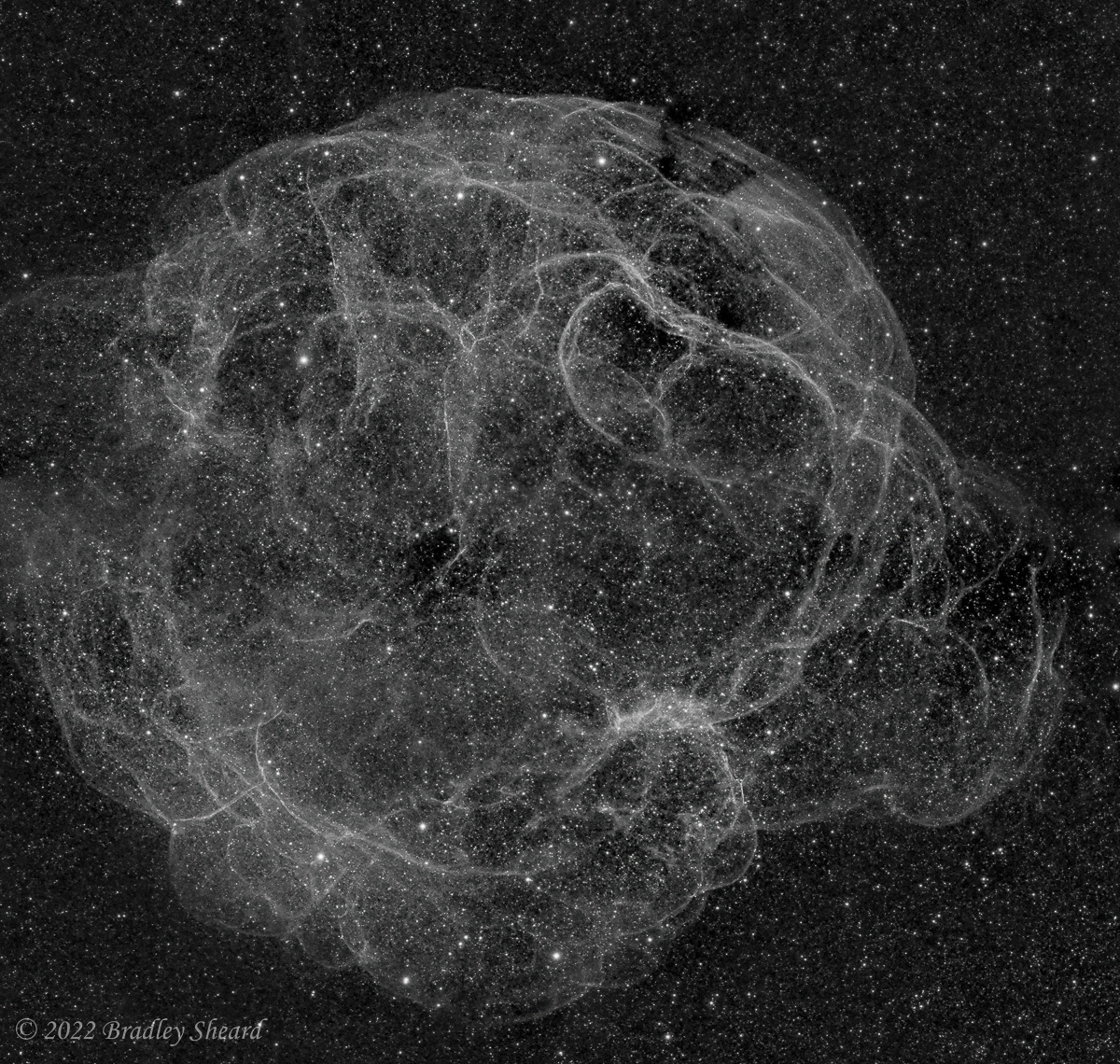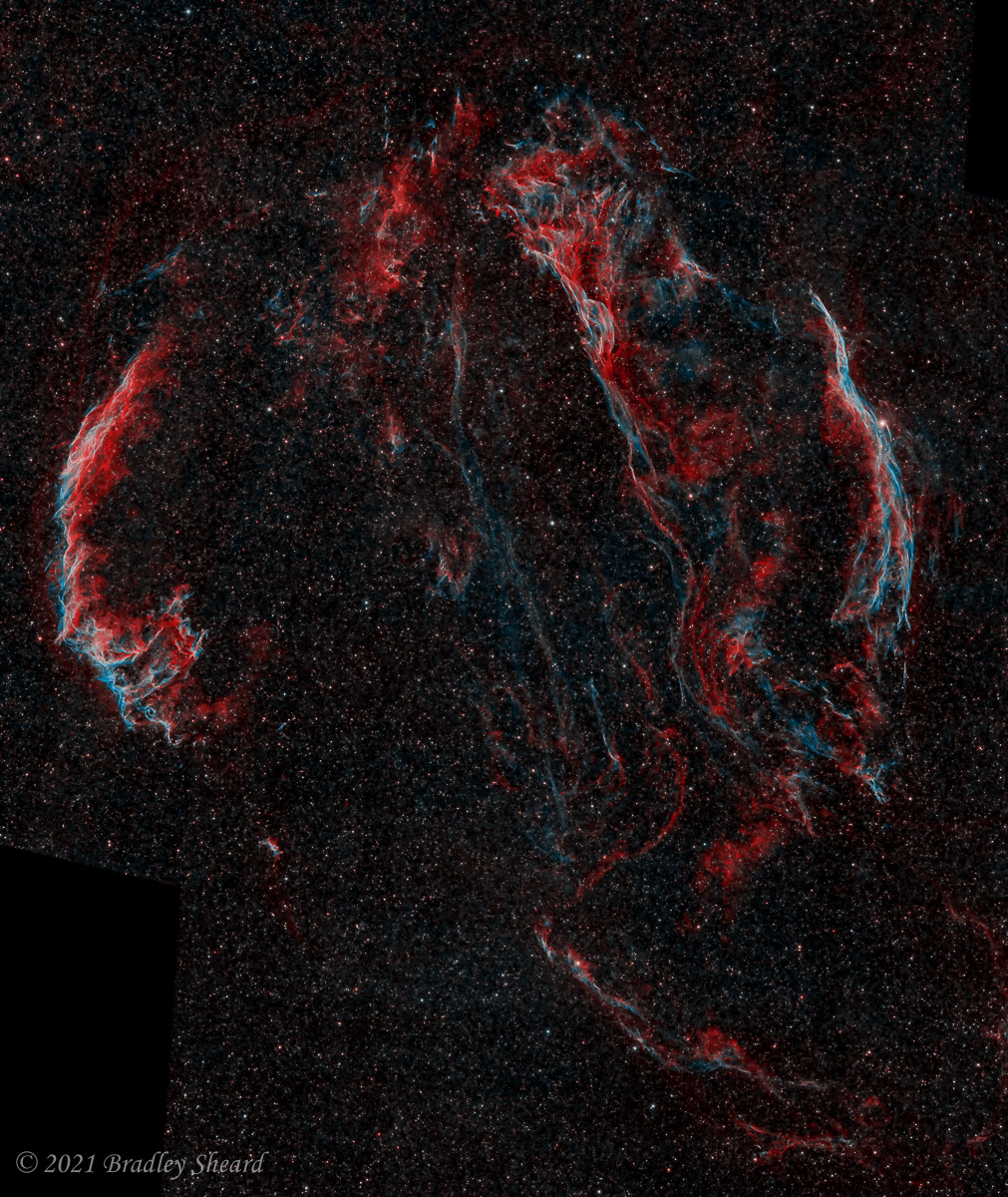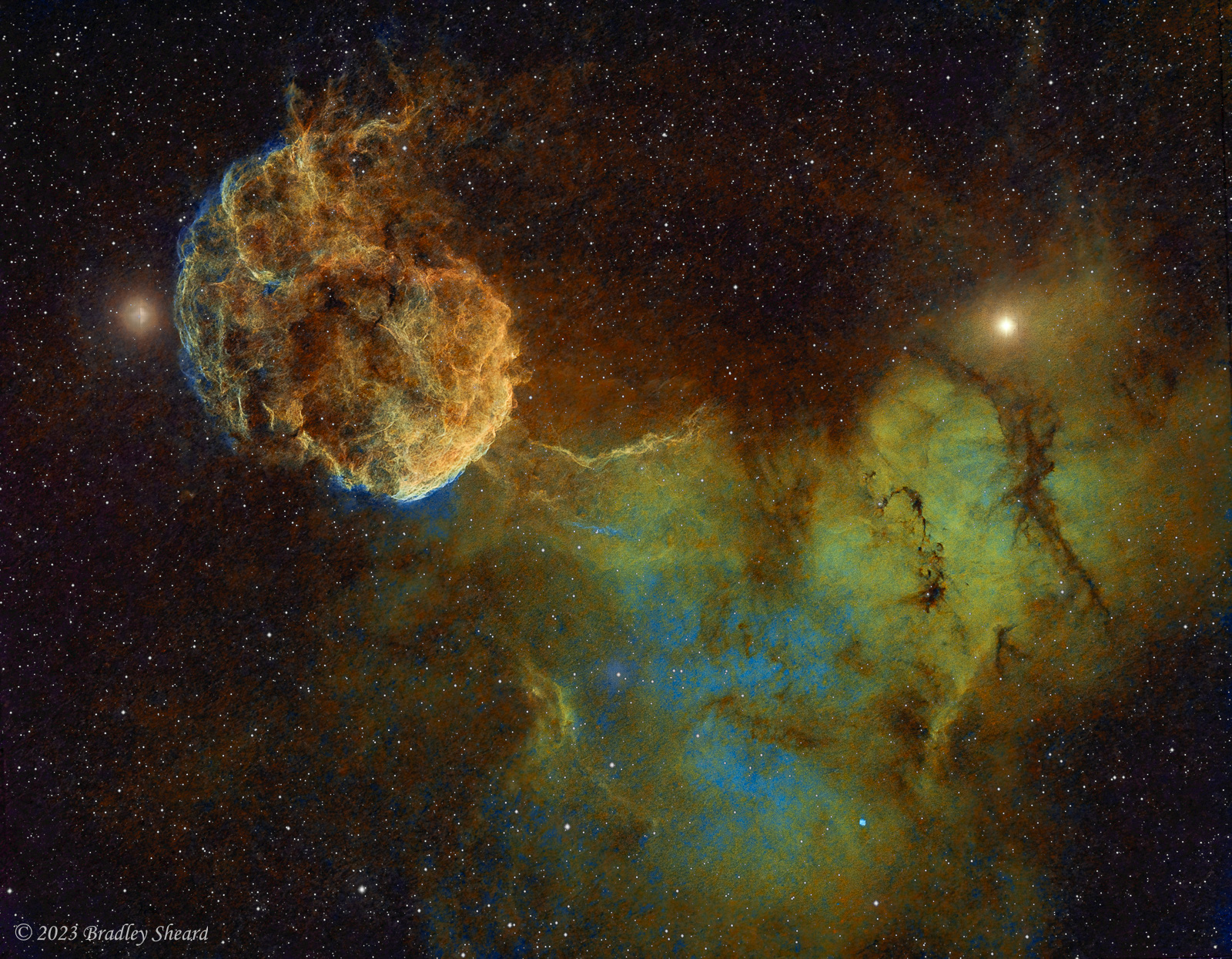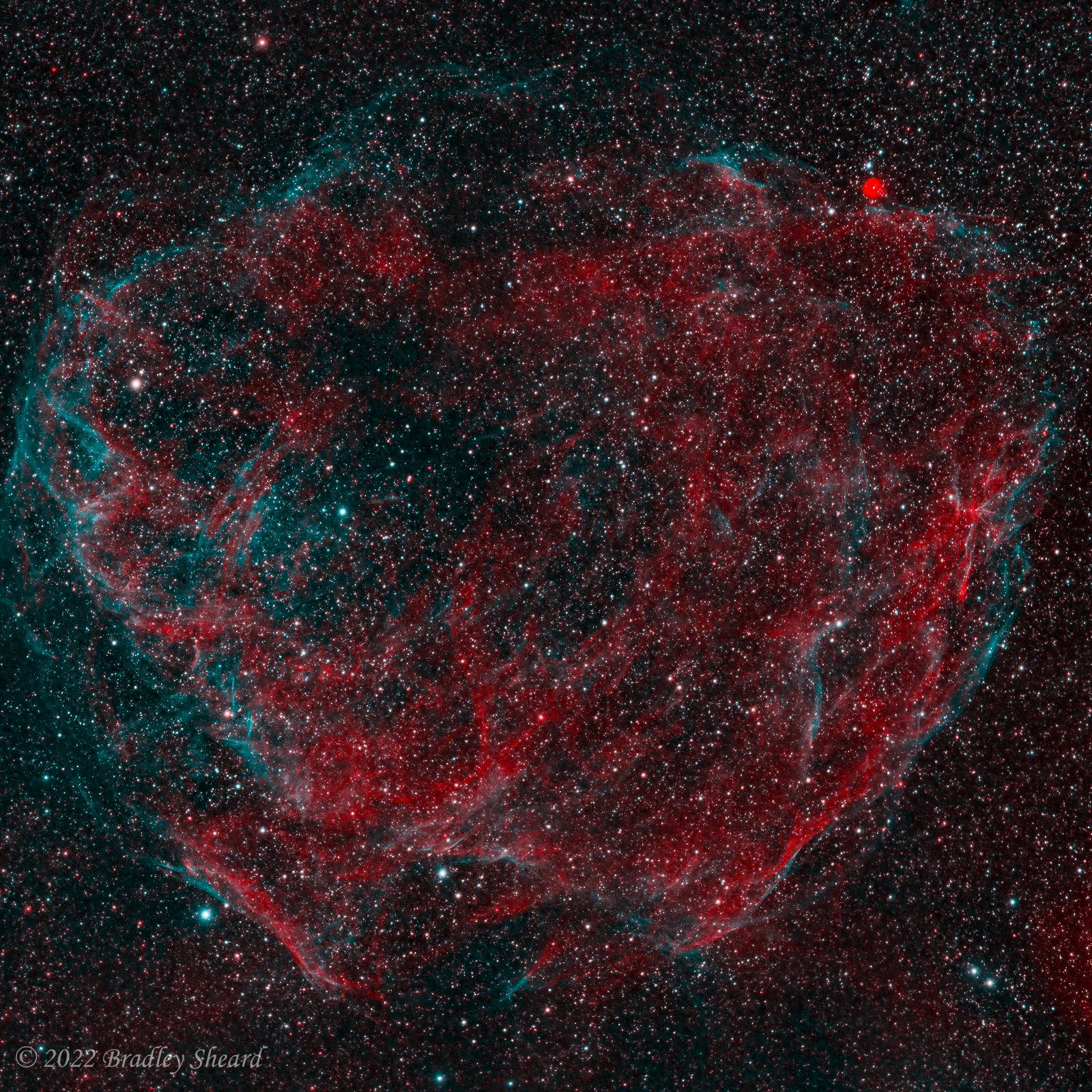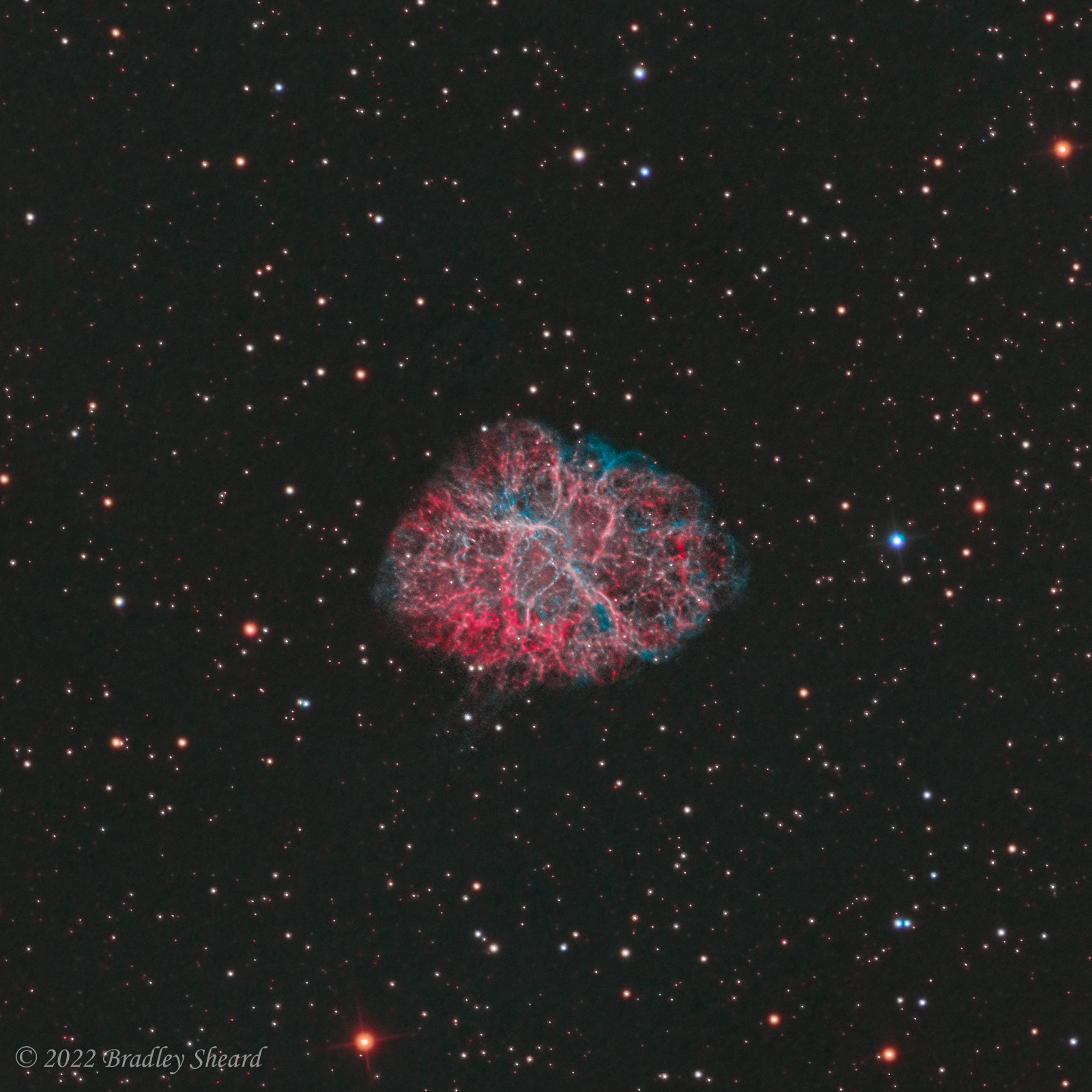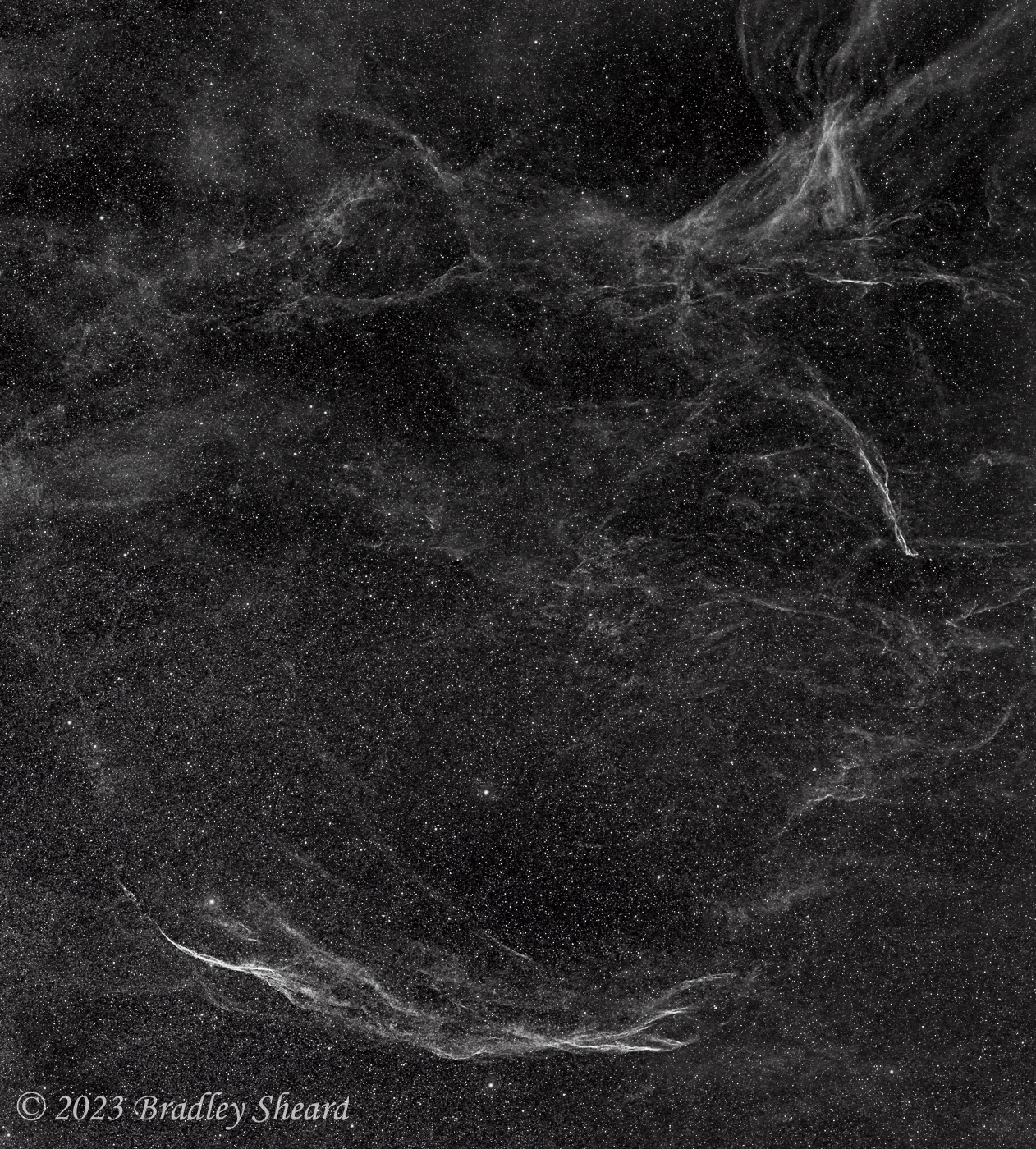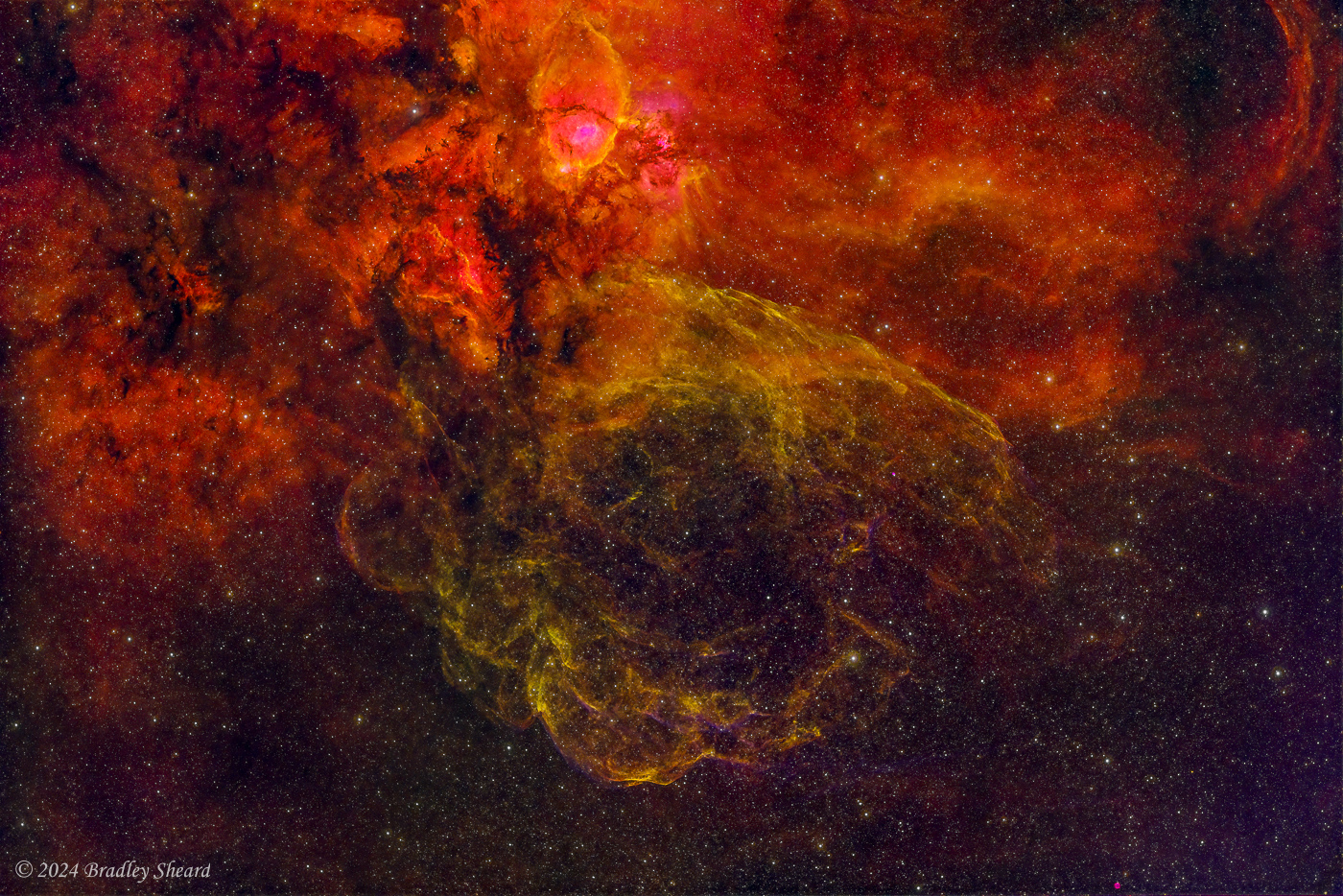A supernova is nothing short of the massive explosion of an entire star. The light output temporarily (weeks to months) increases so dramatically that the brightness of that single, exploding star can compete with the light output of an entire galaxy containing trillions of stars. The material ejected from the supernova expands at high velocity, forming a nebulous shell of gas and debris--a supernova remnant (SNR) that can last for hundreds to thousands of years.
A star (like our sun) is a gigantic sphere of mostly gaseous hydrogen and helium, large enough that its self-gravity creates enough temperature and pressure in the core to fuse hydrogen into helium. This nuclear fusion is the source of the energy and light that the star emits, but eventually all stars (and our sun) will run out of fuel, and what happens next is entirely dependent on the star's initial mass. Ironically, small less massive stars can last for trillions of years, while large, massive stars live "fast and furious lives," burning through their fuel supply relatively quickly, and may last only a few million years.
Stars that have an intial mass between 0.8 and 8 x the sun's, will first evolve into red giants when their core hydrogen fuel is used up. The end of central hydrogen fusion causes the core to contract, while the star's outer envelope expands and cools, shifting the light to cooler red wavelengths. As the core contracts, its pressure and temperature rises until fusion of helium, now the core's major constituent, becomes possible. The core is now fusing helium into carbon and oxygen, while a shell surrounding the core continues to fuse hydrogen into helium, adding more fuel to the core. Eventually core helum is exhausted, and stars of this mass range reach the end of the line. Central fusion ceases, causing the core to contract while the star's outer layers cool and expand, and the star sheds these outer layers forming a "planetary nebula" (funny name, nothing to do with planets). The carbon-oxygen core that is left behind forms a white dwarf that slowly cools over billions of years, but produces no new energy.
Stars with initial masses greater than 8x the sun's, however, have a much more interesting end-of-life story. After exhausting the hydrogen fuel in their core, they too expand into red giants, while their cores contract and heat up, eventually transitioning to fusing helium into carbon and oxygen in the core, while a shell of hydrogen surrounding the core continues to create helium and feed the core. After the helium is used up, these massive stars have enough gravity to achieve higher temperatures and pressures in their core and successively fuse heavier elements still, eventually creating a nickel-iron core surrounded by shells of successively lighter elements. But iron is the end of the line, as fusing heavier elements requires the addition of energy, rather than liberating energy. Once central fusion ends for good, the core rapidly collapses (on the order of seconds!), heating up and then rebounding in a tremendous explosion that releases an amount of energy rivaling that of an entire galaxy--this explosion is called a supernova. The remaining core collapses into either a neutron star, or if massive enough, into a black hole.
What is left behind after a core-collapse Supernova? The remains of the collapsed core becomes either a neutron star (often rapidly spinning due to conservation of angular momentum, forming a pulsar), or if massive enough, a black hole. Meanwhile, the outer envelope of the star is driven outward by the explosion at extremely high velocity, forming a (theoretically) spherical nebula of expanding gas and dust, creating shock fronts and heating both the expanding gas and the interstellar medium (ISM) into which it is expanding. The expanding SNR is rich in metals and heavier elements, seeding the ISM with material for the next generation of stars. This expanding shell of gas and dust is a "supernova remnant," eventually becoming light years across and glowing in the characteristic wavelenghts of emission nebula that can be photographed.
*** This page is really a "collector page" that provides links to a more detailed page for each image. The common thread here is to link all of my images of supernova remnants along with an overview of what they represent. Clicking on the images below will take you to a separate web page with a larger image of that SNR *** |

